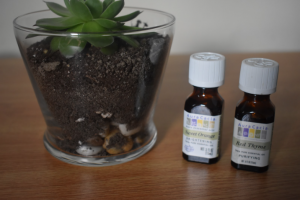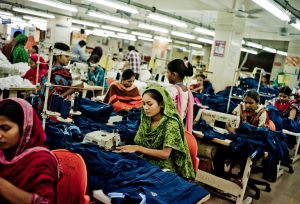-Makenna Bridge ’20
With the growing season well underway and nearly all of the crops planted, much of the work of the garden crew has been devoted to monitoring plant growth and making sure that the plants are in an environment which allows them to flourish. While on a conventional farm this may mean applying harsh chemical fertilizers and pesticides, we at the Colgate Community Garden believe in utilizing sustainable organic methods of soil management and pest control.
Instead of using harmful fertilizers, the garden makes use of natural products such as vermicompost to enhance the composition of the soil which leads to healthier, higher-yielding crops. The vermicompost that is used at the garden is produced by Devine Gardens, a local worm farm. This past week, the garden team, along with the sustainability interns, had the opportunity to travel to Devine Gardens in Morrisville for a tour and to learn more about the vermicompost process.
 Devine Gardens is owned by Tina and Mike Jacobs who have been operating a vermicompost business since 2010. They keep their worms in a cool, dark barn inside large containers which resemble the raised beds that we have at the garden. They use byproducts from local sawmills and farms to feed their worms and the worms produce castings through digesting these raw materials. Tina adds the food to the top of the bin, and as the worms mix and eat through it, the final product sinks to the bottom of the container and falls through small openings onto the floor, where it can be collected. In order to produce the best vermicompost, the feedstock given to the worms needs to retain a specific ratio between nitrogen and carbon levels and therefore can be a complicated process.
Devine Gardens is owned by Tina and Mike Jacobs who have been operating a vermicompost business since 2010. They keep their worms in a cool, dark barn inside large containers which resemble the raised beds that we have at the garden. They use byproducts from local sawmills and farms to feed their worms and the worms produce castings through digesting these raw materials. Tina adds the food to the top of the bin, and as the worms mix and eat through it, the final product sinks to the bottom of the container and falls through small openings onto the floor, where it can be collected. In order to produce the best vermicompost, the feedstock given to the worms needs to retain a specific ratio between nitrogen and carbon levels and therefore can be a complicated process.
Their vermicompost has a high concentration of microorganisms and natural plant growth hormones. After the tour, we were able to purchase some of the vermicompost and have been seeing great results at the community garden. Thanks for the tour Tina!
We also have many critters that enjoy visiting the community garden, like the tree frog that is pictured above. However, not all of these visitors are cute or welcome. Recently we have been having a lot of trouble with flea and cucumber beetles eating our plants. Thankfully, there are many organic methods which are beneficial in deterring these damaging bugs. One of our favorite ways to protect crops is through using row cover, a thin agricultural fabric which is placed over plants in order to create a barrier between them and harmful pests. We use hoops made from PVC pipes to hold the cover upright, and then place rocks on the sides to prevent the fabric from blowing in the wind. This method can prove quite successful at  deterring many pests, however some bugs are able to infiltrate the row cover. When this occurs, we use other methods, like diatomaceous earth in order to protect the plants. Diatomaceous earth is a white talc-like powder that consists of the fossils of marine phytoplankton. These tiny pieces of fossilized shell are incredibly sharp, and can cut through the exoskeleton of pests when they walk on it, causing them to dry out. We use this powder to sprinkle over the plants, like this cabbage plant which has been severely damaged. It is very effective at killing bugs but is harmless to humans and plants.
deterring many pests, however some bugs are able to infiltrate the row cover. When this occurs, we use other methods, like diatomaceous earth in order to protect the plants. Diatomaceous earth is a white talc-like powder that consists of the fossils of marine phytoplankton. These tiny pieces of fossilized shell are incredibly sharp, and can cut through the exoskeleton of pests when they walk on it, causing them to dry out. We use this powder to sprinkle over the plants, like this cabbage plant which has been severely damaged. It is very effective at killing bugs but is harmless to humans and plants.
By the practicing these organic pest control methods, we are able to produce a variety of delicious vegetables. You can buy these farm fresh veggies at our weekly farmstand, located in front of Huntington Gym, on Tuesday nights from 4:30-6:00!




 While many scented products like air fresheners, laundry detergents, perfumes, and colognes may contain trace amounts of natural fragrance, they are largely comprised of synthetic fragrances made from petroleum known collectively as “petrochemicals.”
While many scented products like air fresheners, laundry detergents, perfumes, and colognes may contain trace amounts of natural fragrance, they are largely comprised of synthetic fragrances made from petroleum known collectively as “petrochemicals.”



